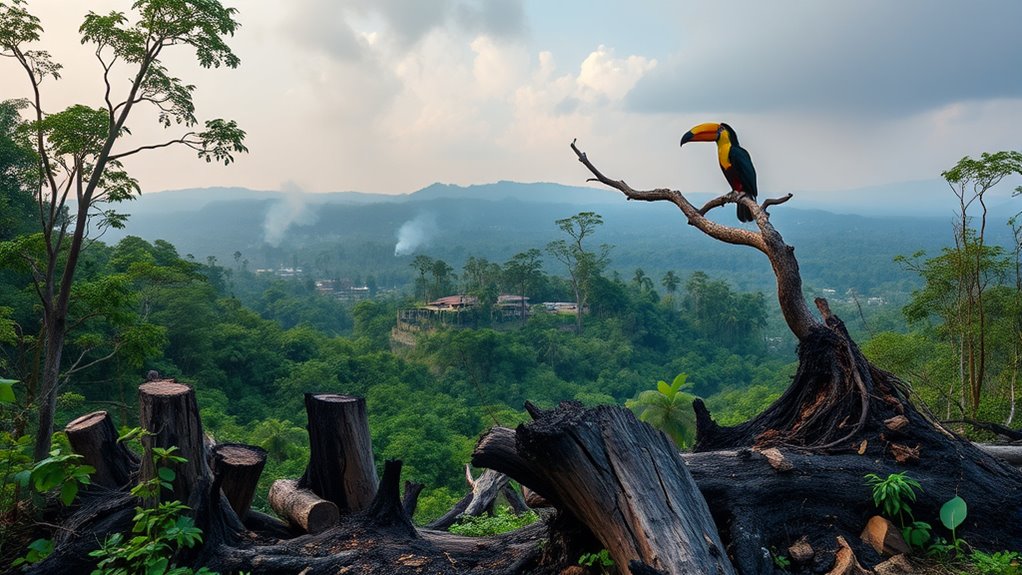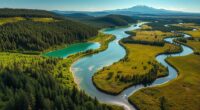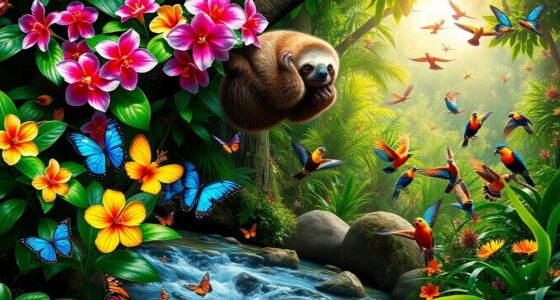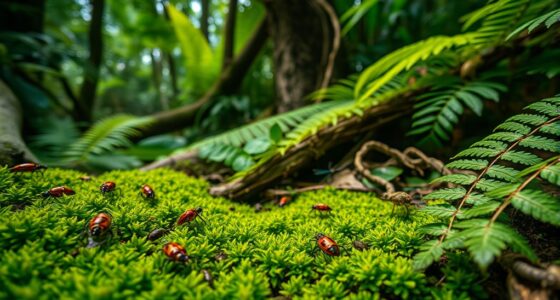Human activities like habitat destruction, invasive species, and overexploitation threaten biodiversity around you. These actions disrupt ecosystems, outcompete native species, and deplete populations faster than they can recover. Climate change worsens these issues by changing habitats and making ecosystems more vulnerable. If you want to understand how these threats impact our planet and what can be done, you’ll discover important insights that help protect our Earth’s rich biological heritage.
Key Takeaways
- Habitat loss from deforestation, urbanization, and agriculture reduces available spaces for native species.
- Invasive species disrupt ecosystems by outcompeting and displacing native flora and fauna.
- Overexploitation of wildlife through hunting, fishing, and logging depletes populations and threatens extinction.
- Climate change alters habitats and environmental conditions, facilitating invasive spread and stressing native species.
- Human activities driven by economic interests accelerate biodiversity loss and hinder ecosystem resilience.
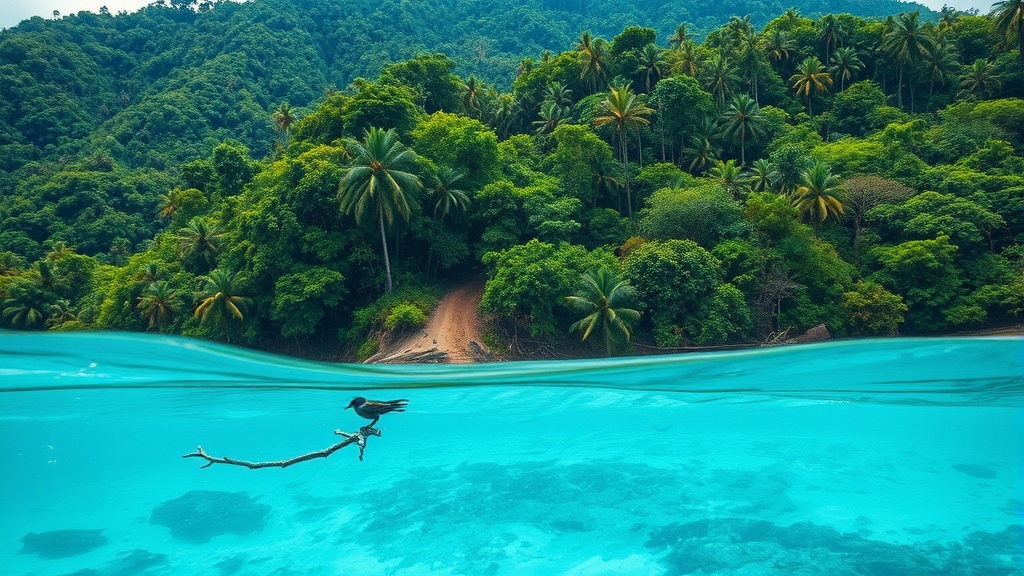
Have you ever wondered what dangers threaten the rich variety of life on Earth? The answer is complex, involving multiple interconnected factors that continue to push many species toward extinction. Among these dangers, invasive species and overexploitation stand out as significant contributors to the decline of biodiversity. Invasive species are non-native plants, animals, or microorganisms that enter new environments, often accidentally, and establish themselves aggressively. Once they take hold, they can outcompete native species for resources, disrupt local ecosystems, and cause native populations to decline or vanish. For example, the introduction of invasive plants can choke out indigenous flora, while invasive predators like rats or cats can decimate native bird populations. These invasions often happen through human activities such as global trade, travel, and development, making it difficult to contain their spread once they’re established. Additionally, the high reproductive rates of some invasive species make them particularly difficult to control and eliminate.
Overexploitation is another major threat, involving the unsustainable harvesting of wildlife and plants for economic gain. Whether it’s overfishing, hunting, logging, or collecting rare species for the pet trade, overexploitation depletes populations faster than they can recover. When species are hunted or gathered beyond their reproductive capacity, their numbers dwindle rapidly, pushing them closer to extinction. Think about the plight of many marine species, like sharks and certain fish, which are caught in massive numbers to meet global demand. Similarly, timber extraction from forests often exceeds natural regeneration rates, leading to habitat destruction and loss of countless plant and animal species. Overexploitation doesn’t just deplete individual populations; it destabilizes entire ecosystems, reducing their resilience and ability to provide essential services like clean water, air purification, and climate regulation. Recognizing the role of reproductive capacity in species survival is crucial for developing sustainable management practices.
Both invasive species and overexploitation are driven by human activities and economic interests, often overlooking the long-term consequences for biodiversity. They create a domino effect: as native species decline, ecosystems lose their balance, impacting other organisms, including humans. The spread of invasive species can also be accelerated by climate change, which modifies habitats and makes ecosystems more vulnerable to new threats. Meanwhile, overexploitation continues to be fueled by demand for products, often without regard for sustainable practices. Human-induced habitat disturbance and urban development further exacerbate the problem by fragmenting ecosystems and facilitating the spread of invasive species. If these threats aren’t addressed, the diversity of life that sustains our planet’s health and stability will continue to diminish. Protecting biodiversity requires awareness, regulation, and collective effort to reduce the impact of invasive species and prevent overexploitation, ensuring that future generations can also enjoy Earth’s rich biological heritage.
Frequently Asked Questions
How Do Invasive Species Affect Native Biodiversity?
Invasive species considerably impact native ecosystems by competing with native plants and animals for resources. You might notice them outcompeting or displacing native species, which reduces biodiversity. These invasive species often lack natural predators, allowing their populations to grow rapidly and disrupt the balance of native communities. By altering habitats and food webs, invasive species threaten the health and resilience of native ecosystems, leading to long-term ecological changes.
What Role Do Protected Areas Play in Conservation?
Did you know that protected areas cover about 15% of the world’s land? They play a crucial role in conservation by safeguarding ecosystems and species. You can help by supporting ecological corridors that connect these areas, allowing wildlife to move freely. Community engagement is key to successful conservation efforts, as it fosters local support and sustainable practices. Together, protected areas and active communities can preserve biodiversity for future generations.
How Does Pollution Impact Different Ecosystems?
You see how pollution impacts ecosystems by contaminating air and water, which harms plants, animals, and humans. Soil contamination from chemicals and waste disrupts plant growth and weakens the foundation of terrestrial habitats. In aquatic environments, pollutants like plastics and chemicals threaten marine life. When pollution spreads, it reduces biodiversity, damages ecosystems, and jeopardizes the health of all organisms relying on these essential resources.
What Are the Economic Costs of Biodiversity Loss?
You should understand that biodiversity loss has significant economic costs. Through economic valuation, we see how ecosystem services like clean water, pollination, and climate regulation support our economy. When biodiversity declines, it reduces these benefits, leading to higher costs for recovery and conservation funding. This loss impacts agriculture, tourism, and health sectors, ultimately threatening your community’s economic stability and well-being.
How Can Individuals Contribute to Biodiversity Conservation?
Did you know that individual actions can greatly impact biodiversity? You can contribute by adopting eco-friendly habits, like reducing plastic use and conserving water. Urban planting is another great way—by creating green spaces, you support local ecosystems. Small changes in your daily routine, such as supporting sustainable products and advocating for conservation, help protect habitats and species. Your efforts, combined with others, make a meaningful difference in preserving biodiversity.
Conclusion
Think of Earth’s biodiversity as a delicate garden. Each plant and animal is like a unique flower, thriving only when the environment is nurtured. When you neglect the garden—through habitat loss and climate change—it withers and fades. You hold the watering can and the pruning shears. Only by tending this garden responsibly can you guarantee its vibrant colors and intricate balance flourish for generations to come. Your actions determine whether the garden remains a paradise or becomes a wasteland.
